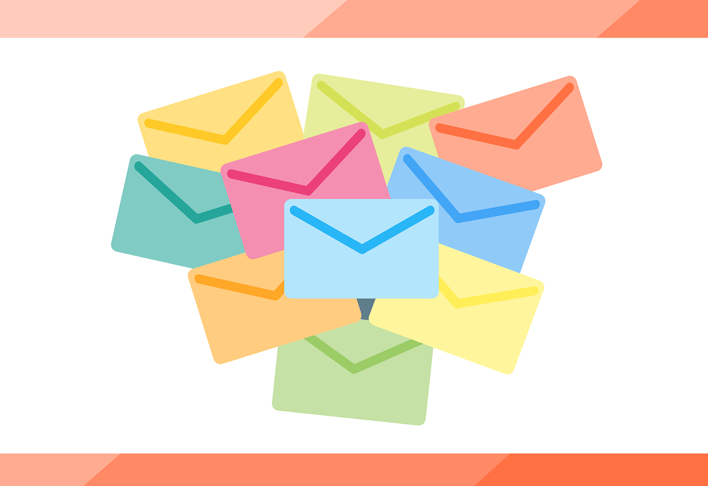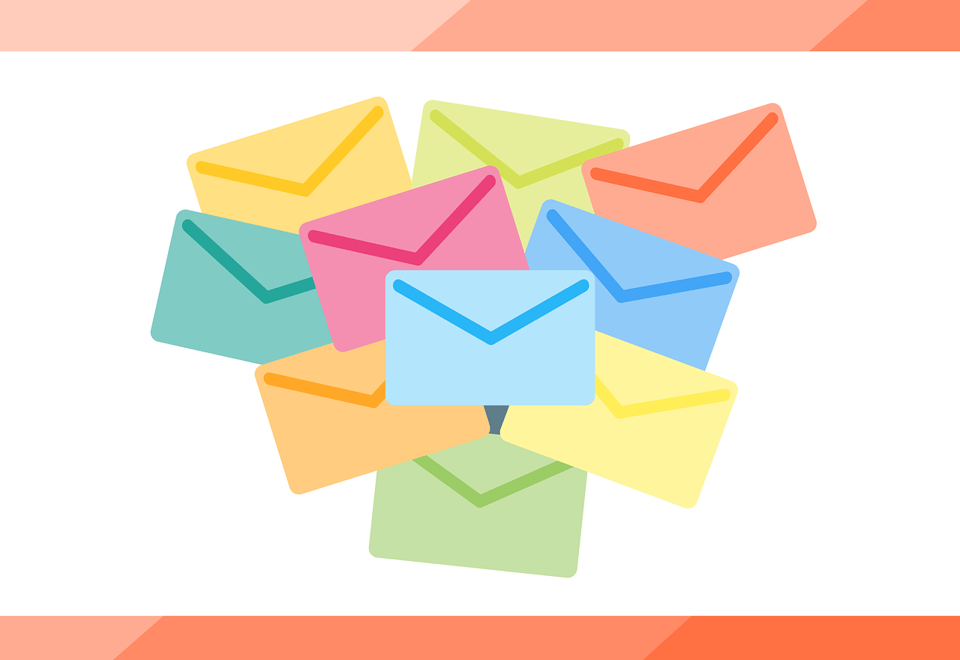
From finance to real estate, retail to road construction, it doesn’t matter what field you’re in—we all use email. And I’m willing to bet we all feel pretty overwhelmed by our inbox a decent amount of the time.
Some use email as a to-do list, leaving messages unread until they’ve been attended to. Others let messages pile up like an avalanche, hoping by sheer luck they won’t miss anything important. Neither of these are an ideal scenario.
To keep email from taking over your life, you need tools. In this post, we’ll share a dozen of our favorite tools that will help you send the right message at the right time, avoid obsessive inbox checking, save hours of your life and cut down on email mishaps.
1. Boomerang
I discovered Boomerang several years ago while looking for a way to schedule email sends in the future, the same way you can schedule a social media post for a certain time and day. What I found was Boomerang, which accomplishes that function and more.
Why would you want to send a message in the future? For me it was because I was catching up on emails on a Saturday, but didn’t want my team to feel pressured to respond in the middle of their weekend. I held the messages to send until Monday morning.
Another great example is those times you remember something you need to do—like follow up with a vendor at the end of the week—but the email doesn’t need to be sent just yet. Schedule it with Boomerang and put it out of your mind.
Boomerang has another great feature that I love and never even knew existed: inbox pausing. That’s right, you can pause your inbox from delivering new messages if you’re working on an urgent task or having trouble disconnecting. It enables you to set specific times you’d like emails delivered (first thing in the morning and after lunch are great options) and the rest of the time your inbox will cease to be a distraction. Genius!
2. Undo Send
Have you ever hit the ‘send’ button and immediately had your mouth drop open in horror, realizing you hit ‘reply all’ instead of just ‘reply?’ Or worse, sent an email containing sensitive information to the wrong person?
We’ve all had an email faux pas that made us wish we could reach out into the abyss and grab back the message we just sent. A simple Gmail setting makes this possible.
It’s called Undo Send, and any Gmail user can enable it. From your inbox on a desktop, click the gear icon at the upper right corner and choose Settings from the dropdown menu. On the General tab, look for the section labeled Undo Send and simply turn it on. This will put delivery of your emails on a short timed delay of your choosing. So, if you notice an error, you can quickly hit the Undo button and stop the message from going out. It’s a lifesaver!
Just for fun: 5 professionals share their biggest email blunders
3. Grammarly
 Though not as damaging as blasting out a confidential document to your entire payroll, sending an email with a glaring grammatical error can be equally embarrassing. Sure, spellcheck will catch common errors like ‘definately' and ‘neccesary’, but it’ll leave you hanging with other easy-to-screw-up grammar conundrums like using ‘there’ instead of ‘their.’
Though not as damaging as blasting out a confidential document to your entire payroll, sending an email with a glaring grammatical error can be equally embarrassing. Sure, spellcheck will catch common errors like ‘definately' and ‘neccesary’, but it’ll leave you hanging with other easy-to-screw-up grammar conundrums like using ‘there’ instead of ‘their.’
Enter: Grammarly.
This lightweight browser extension is designed to catch the subtle grammatical errors that spellcheckers miss, like words used in the wrong context or missing punctuation. It’ll work in email but also anywhere you type things on the web. There’s also a version that works with Microsoft Office.
4. Calendly
Emailing back forth and forth in a meeting-scheduling tennis match is a thing of the past. Calendly integrates with your calendar app of choice and provides a simple link colleagues can use to book available time on your calendar.
I love this tool because it gives you full control of how and when people can book meetings with you. You can set it up so that you have a minimum buffer time between meetings, block off chunks of time that are off-limits, or prevent people from scheduling at the last minute.
The best part is Calendly’s group scheduling tool, which automates the near-impossible task of finding a meeting time that works for, say, five busy people who all need to connect for a conference call.
5. HubSpot Sales Extension
One of the most frustrating parts of business is waiting. Waiting for a sales prospect to respond to your email. Waiting for a colleague to complete their portion of a project. HubSpot’s Sales extension for Chrome makes the waiting a little more bearable by letting you know when a contact has opened your message or clicked on a link within it.
If what you’re waiting on requires follow-up action on your part, like when a prospect views a sales proposal, you can choose to receive a notification when that particular action happens. HubSpot’s Sales extension also displays a handy sidebar outlining your relationship history with a contact so you can get a quick refresh on what you’ve covered in past correspondence before following up.
Related: 6 Essential Business Management Tools You Need To Build Your Business
6. Coschedule Headline Analyzer
Want to make sure your emails get opened every time? It all comes down to one thing: your subject line. If the subject line looks unimportant or unassuming, your message might accidentally get overlooked or worse, sent to the trash.
Coschedule’s Headline Analyzer was designed to help you write more catchy headlines for articles and blog posts, but I actually like to use it for email subject lines, as well. It’s especially useful for sales and marketing emails.
Just type your proposed headline (or in this case, subject line) into the Headline Analyzer and the tool will pop out an analysis of its length, readability and catchiness. Optimizing these items according to Coschedule’s recommendations will promote higher open rates, which ultimately helps you get your work done faster.
7. Mailzinger
 Email is both a blessing and curse. It dramatically cuts down the time and effort involved in communication, but it also means that anyone, anywhere has access to you. These days everything requires an email address, from your online banking system to your Netflix subscription, which means it’s harder than ever to keep your email address private.
Email is both a blessing and curse. It dramatically cuts down the time and effort involved in communication, but it also means that anyone, anywhere has access to you. These days everything requires an email address, from your online banking system to your Netflix subscription, which means it’s harder than ever to keep your email address private.
Mailzinger is a brilliant tool that takes care of this problem. Anytime you’re asked to input your email address, whether it’s signing up for an app or ordering a pizza, Mailzinger will automatically generate a masked email address to use in place of your actual one. All messages will still reach your inbox, but the sender won’t have access to your sacred email address and won’t be able to contact you at their leisure. All I can say is I wish I discovered this tool years ago!
8. IFTTT
I have a really bad habit when it comes to checking email (okay, I have a few, but this one’s especially bad): any time I’m out and about and have a down moment—standing in line at Starbucks or waiting for the train, for example—I refresh my inbox. Anyone else?
It’s not necessarily that I’m waiting on an urgent message, I just wanna see what’s in there, you know? Mostly, I think it’s that I don’t want to miss anything important if it crosses my plate. IFTTT (If This, Then That) removes the need to obsessively refresh your inbox by sending you a text message when an important email is delivered.
IFTTT can do a lot of cool things, by the way. It’s an automation tool that completes certain tasks based on “recipes” you create. Learn how to enable the email-to-text notification recipe here, and read about some other useful IFTTT recipes to simplify the rest of your life in this article.
9. Nudgemail
Let’s talk about another one of my inbox bad habits: marking things as unread anytime they require follow up. All this does is contribute to a clogged inbox filled with non-urgent tasks that are clawing at my limited attention. Not ideal.
Nudgemail helps you to stop using your inbox as a to-do list by getting rid of the need to mark things unread. When you come across a message that requires further action or can wait a few days, tell Nudgemail when to nudge you and it will follow up with a reminder when it’s time to revisit the message.
10. Canned Responses
We all have a handful of emails we send all the time, like ‘Thanks, appreciate it’ or ‘Don’t forget to turn in your timesheets by 5 pm.’
Canned Responses save you precious seconds by allowing you to send templated emails for your most commonly used messaged with a couple clicks. Canned Responses are specific to Gmail, but most email clients have a similar feature you can enable.
At first I was unsure of how useful this tool would be, but now that I have the hang of it I use it all the time! You’d be surprised how many messages you can automate when you put a little thought into it.
A few canned responses I use frequently:
- Responding to prospective client inquiries that aren’t a good fit
- Responding to sales pitches that aren’t relevant to me
- Politely saying ‘no’ to requests I can’t accommodate
- Suggesting that someone book time using my Calendly link
This is a good tutorial to get up and running with Canned Responses.
Related: Free Marketing Tools No Entrepreneur Should Live Without
11. Unroll.me
What’s taking up all that space in your inbox? For one thing, subscriptions. Through the years you’ve probably acquired dozens or even hundreds of email subscriptions, some that you didn’t even ask for!
It would take hours to find and unsubscribe from all of them manually. Unroll.me lets you tackle them all in one fell swoop. It analyzes your inbox and aggregates all of your subscriptions, allowing you to either unsubscribe from them all at once or go down the list to pick and choose which ones you want to keep. It’s an awesome tool for eliminating inbox clutter.
12. Sortd
This is perhaps my favorite tool on this list because it’s unlike anything I’ve seen before, but so useful. For those of us who can’t help but think of our inbox as a to-do list, Sortd makes it manageable.
It allows you to organize your inbox into drag-and-drop lists grouped by sender, category, or any other grouping mechanism you come up with. If you’ve ever used the task management tool Trello, it’s a similar interface applied to your inbox.
Rather than one loooong, never-ending list of messages, your inbox turns into an automatically sorted series of lists categorized by project and priority level. I’m obsessed with it. It was designed for sales teams, but I find it highly useful for organizing my life in general when it comes to email.
What are your favorite tools for managing email? Any that didn’t make this list? Leave a comment and share them with us below!
The tools you need to run your business don't stop with email. Our free cash flow forecast tool helps you see how today's decisions will impact your cash weeks and months down the road.
You Might Also Like...
6 Essential Business Management Tools You Need To Build Your Business














.png)


